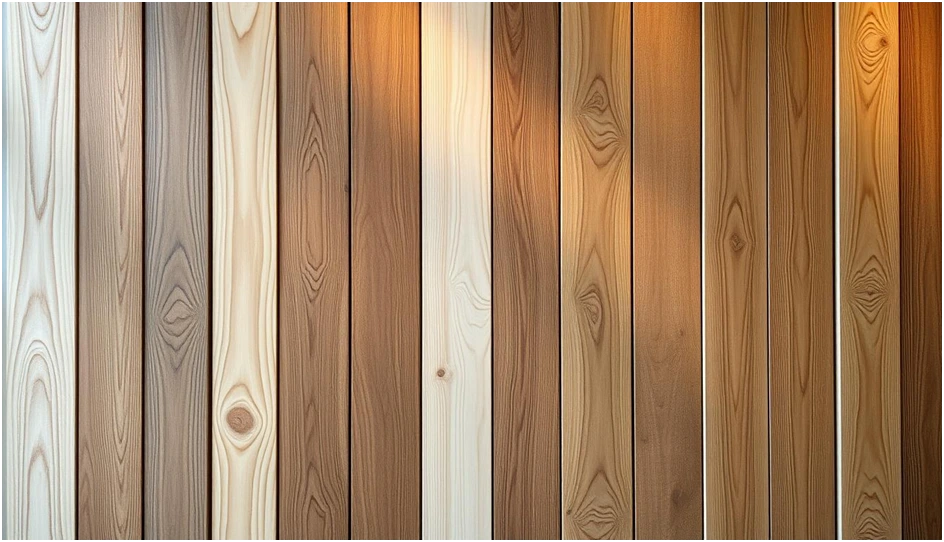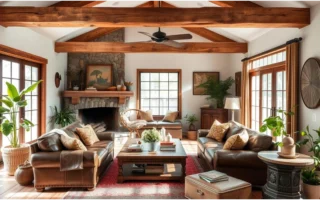Table of Contents
Wood panels can really make your home look better. They add warmth and elegance to walls. With so many types out there, picking the right one can be tough. This article will help you choose the best wood panels for your walls, covering design, installation, and care.
Thank you for reading this post, don't forget to subscribe!Think about the wood type, panel thickness, and texture when choosing. Wood panels can bring a rustic or modern look to your home. The right panels can make your space unique and welcoming, showing off your style.
Key Takeaways
- Choose the right type of wood panels for your walls to enhance their aesthetic appeal
- Consider factors such as panel thickness and surface texture when selecting wood panels
- Wood panels can add a touch of warmth and elegance to your home
- Proper maintenance is essential to extend the lifespan of your wood panels
- Wood panels can be used to create a unique and inviting space that reflects your personal style
- Consider your budget and needs when selecting wood panels for your walls
Understanding Wood Panels and Their Benefits
Wood panels can make a room look better. They add elegance and sophistication. You can pick from many types of wood panels, each with its own look and benefits.
Wood panels offer several advantages. They improve insulation and sound quality. They also make a room look nicer and can cover up uneven walls.
Types of Wood Panels Available
There are many wood panel types, like solid, engineered, and reclaimed wood. Solid wood is durable but expensive. Engineered wood is cheaper and easier to install. Reclaimed wood is unique and eco-friendly.
Advantages of Wood Panel Installation
Installing wood panels has many benefits. They make buildings more energy-efficient by reducing heat loss. They also let you personalize your space. Plus, they can increase your property’s value.
Impact on Room Aesthetics
A panel wall can change a room’s look. It adds warmth and coziness. Wood panels can also highlight a room’s best feature, like a statement wall.
| Type of Wood Panel | Characteristics | Advantages |
| Solid Wood Panels | Durable, long-lasting | Can last for many years, easy to maintain |
| Engineered Wood Panels | Affordable, easy to install | Can be easily installed, more affordable than solid wood panels |
| Reclaimed Wood Panels | Unique, eco-friendly | Can add a touch of personality to a space, eco-friendly option |
Selecting the Right Wood Species for Your Panels
Choosing the perfect wood for your wood veneer panels is exciting. You can pick from many options, like oak for a classic look or mahogany for durability. Each wood has its own look, grain, and color. Think about your climate, how you’ll use the room, and what you want it to look like.
Deciding between solid wood panels and wood veneer panels is important. Solid wood panels are one piece of wood. Wood veneer panels are thin wood slices over a base. Your choice depends on what you need and your budget.

- Oak: known for its distinctive grain pattern and durability
- Pine: a cost-effective option with a soft, knotty texture
- Cedar: a durable, aromatic wood often used for outdoor applications
- Mahogany: a rich, reddish-brown wood with a fine grain
By carefully choosing your wood, you can make a beautiful and useful space. It will meet your needs and improve your home’s look.
Essential Factors in Wood Panel Design
When designing wall panel design, several factors are crucial. You want your wood panels to look good and work well. Panel thickness is key, affecting both looks and durability.
A thicker panel offers a solid, premium feel. A thinner panel is more versatile and easier to install. The panel’s thickness also shapes the room’s look. A thicker panel can make a bold statement, while a thinner one adds subtlety.
Panel Thickness Considerations
Think about the room’s purpose and style when picking panel thickness. Thicker panels suit formal or traditional spaces. Thinner panels work better in modern or contemporary settings.
Surface Texture Options
The panel’s surface texture is also vital. You can pick from smooth, polished, to rustic, distressed textures. The right texture adds depth and interest to your wall panel design, making it unique.
Color and Finish Choices
The color and finish of your panels greatly impact your space’s look. You can choose from many colors and finishes, from natural to bold. Pick a color and finish that complements your wall panel design and enhances your space’s beauty.
Modern Wood Panel Wall Decor Trends
Wood panel wall decor offers many choices. You can pick from geometric patterns to mixing materials. This lets you create a design that shows off your style. For instance, combining wood with metal or glass adds a modern touch.
Now, eco-friendly reclaimed wood panels are popular. They’re made from recycled wood, great for those who care about the environment. These panels can make your space feel cozy and rustic. Reclaimed wood panels also bring history and character to your space.
Wood panel decor fits well with styles like minimalist, rustic chic, and industrial. It can be a statement piece or add texture to a room. Here are some trends:
- Geometric patterns: Use wood panels to create a geometric pattern on your wall, such as a chevron or herringbone design.
- Mixed material combinations: Combine wood panels with other materials, such as metal or glass, to create a unique and modern look.
- Eco-friendly reclaimed wood panels: Use reclaimed wood panels to create a rustic and cozy atmosphere in your home or office.
Here’s an example of how wood panel decor can enhance a space:
a living room with a statement wall made from reclaimed wood panels, paired with a modern sofa and a minimalist coffee table.
Wood panel decor can also highlight a room’s focal point. For example, a wood panel accent wall behind a fireplace or TV.
| Wood Panel Type | Description | Price Range |
| Reclaimed Wood Panels | Made from recycled wood, perfect for a rustic and cozy atmosphere | $50-$100 per panel |
| Engineered Wood Panels | Made from layers of wood, durable and affordable | $30-$70 per panel |
| Solid Wood Panels | Made from a single piece of wood, high-quality and expensive | $100-$200 per panel |
Adding wood panel decor to your space can make it unique and stylish. With so many options, you can find the perfect decor to enhance your home or office.
Measuring and Budgeting for Your Wood Panels
Accurate measurement and budgeting are key for a successful wood panel installation. You need to figure out how many panels you’ll need. This depends on your space’s size and any cuts you might have to make.
First, measure your walls’ length and width. Think about your room’s layout too. This helps you know how many panels you’ll need to buy. Also, consider the type of wood panels you want. Different types have different prices.
When budgeting, remember a few things. The cost of materials, how hard it is to install, and finishing options matter. Here are some points to keep in mind:
- Material quality: Better wood panels cost more than cheaper ones.
- Installation complexity: A complex layout or custom cuts can raise installation costs.
- Finishing options: Adding a stain or sealant can increase the total cost.
By measuring well and thinking about these factors, you can set a good budget. This ensures your wood panel installation goes smoothly.
Professional Installation vs DIY Approaches
When it comes to installing wood panels, you have two options: professional installation or DIY approaches. Both have their pros and cons. The choice depends on your skills, tools, and budget. For a DIY approach, you’ll need basic skills and tools like a saw, drill, and sandpaper.
You’ll also need to know wood panel painting techniques to get the right finish.
A professional installation offers expertise and saves time. They have the right skills and tools for a smooth installation. They can also guide you on the best wood panel painting techniques and materials.
Here are some factors to consider when deciding between professional and DIY approaches:
- Project complexity: If the project is complex, it may be better to hire a professional.
- Personal skill level: If you have experience with DIY projects, you may be able to handle the installation yourself.
- Budget: Professional installation can be more expensive than DIY approaches.
The choice between professional installation and DIY approaches depends on your individual circumstances. If you’re unsure, it’s always best to consult with a professional. They can help determine the best course of action for your wood panel painting project.
Maintaining Your Wood Panel Walls
To keep your wood veneer panels looking great, regular care is key. This includes cleaning, preventive steps, and long-term protection. By following these tips, you can make sure your wood panel walls stay beautiful and last long.
Cleaning your wood veneer panels is very important. Use a soft, dry cloth to wipe them down and remove dust or debris. For deeper cleaning, a mild soap solution works well. But, test it on a small area first to make sure it won’t harm the panels.
Cleaning Methods and Products
When choosing cleaning products, avoid harsh chemicals or abrasive materials. They can damage your wood veneer panels. Instead, use gentle, pH-neutral cleaners made for wood surfaces. Some good choices are:
- Murphy Oil Soap
- Method Squirt + Mop Hard Floor Cleaner
- Bona Hardwood Floor Cleaner
Preventive Care Tips
To prevent damage, control the environment around your wood veneer panels. Keep the humidity level consistent and avoid direct sunlight. Sunlight can cause warping or discoloration.
Common Mistakes to Avoid When Installing Wood Panels
Installing wood panels requires a good wall panel design for a professional look. You need to think about a few things to avoid common mistakes. These mistakes can ruin the quality and look of your wood panel installation.
First, make sure the wood is acclimated to the environment where it will go. This step is often missed but is key to prevent warping or cracking. Also, check that the wall surface is ready, including any outlets or switches that might get in the way.
Other mistakes to watch out for include:
- Incorrect spacing between panels, which can lead to a uneven appearance
- Inadequate planning for wall fixtures, such as electrical outlets or switches
- Failure to consider the overall wall panel design and how it will impact the room’s aesthetics
By planning and executing your wood panel installation carefully, you can avoid these mistakes. This way, you’ll get a beautiful, professional-looking finish. It will enhance the wall panel design of your room.
Conclusion: Making Your Final Wood Panel Selection
Choosing the right wood panel wall decor for your space is a big decision. You need to think about the wood type, design, how to install it, and how to keep it looking good. By now, you know a lot about wood panels and how to make your project a success.
When you’re ready to pick, think about what looks good, lasts long, and is easy to take care of. The wood panel wall decor you choose should match your style and budget. The right wood panels can make a room look amazing, adding a natural beauty that lasts.
Now you’re ready to start looking for wood panels, check out samples, and plan your installation. Wood panels are very versatile, so let your creativity run wild. You’ll create a beautiful, personal space that you’ll love for many years.
FAQ
What are the different types of wood panels available for walls?
You can choose from solid wood panels, wood veneer panels, laminate panels, and engineered wood panels. Each type has its own look, durability, and price.
What are the advantages of installing wood panels on walls?
Wood panels improve insulation and sound quality. They also add warmth and value to your home. Plus, they can change the look and feel of a room.
How do I choose the right wood species for my panels?
Think about the grain, color, and durability of the wood. Oak, pine, cedar, and mahogany are popular choices. Solid wood and wood veneer panels have their own benefits.
What design factors should I consider when using wood panels?
Consider the panel’s thickness, texture, and color. Thickness affects the panel’s look and function. Texture can be smooth or rustic, and finishes range from natural to painted.
What are some modern trends in wood panel wall decor?
Modern trends include geometric patterns and mixing materials like wood and metal. Eco-friendly reclaimed wood is also popular. Wood panels fit many design styles, from simple to rustic.
How do I measure and budget for my wood panel project?
Measure your walls to figure out how much material you need. Think about panel size, quality, and installation complexity when budgeting. Finding the right balance between cost and quality is key.
Should I hire a professional for wood panel installation or do it myself?
Decide based on your skills, the project’s complexity, and the finish you want. Professionals ensure a smooth, high-quality job. DIY can save money if you’re comfortable with the process.
How do I maintain and protect my wood panel walls?
Clean regularly with the right products, control humidity, and avoid direct sunlight. Refinish and seal your panels periodically to keep them looking great and lasting long.
What common mistakes should I avoid when installing wood panels?
Avoid mistakes like not acclimating the wood, wrong spacing, and poor wall prep. Plan well and pay attention to detail for a professional look, even if you’re doing it yourself.














